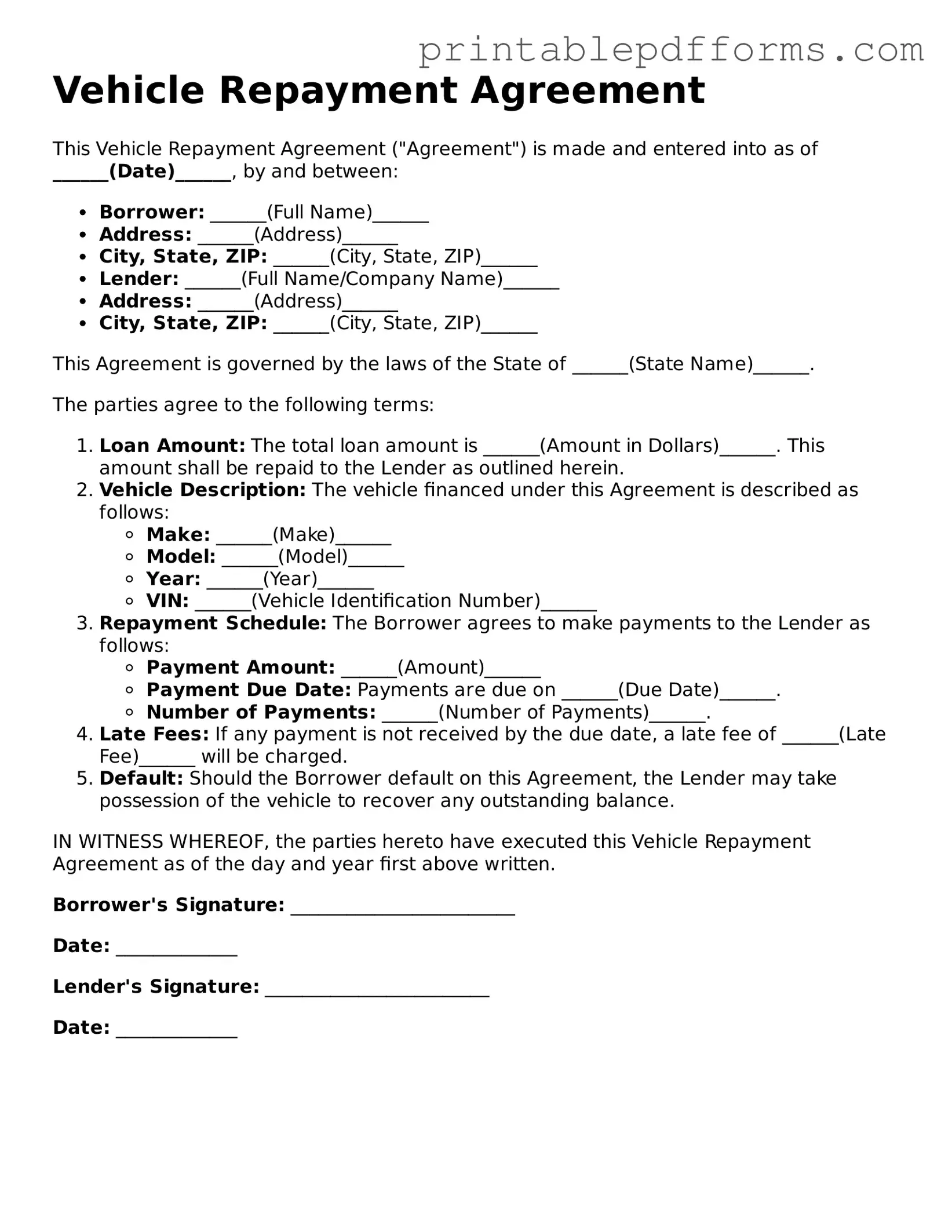Vehicle Repayment Agreement
This Vehicle Repayment Agreement ("Agreement") is made and entered into as of ______(Date)______, by and between:
- Borrower: ______(Full Name)______
- Address: ______(Address)______
- City, State, ZIP: ______(City, State, ZIP)______
- Lender: ______(Full Name/Company Name)______
- Address: ______(Address)______
- City, State, ZIP: ______(City, State, ZIP)______
This Agreement is governed by the laws of the State of ______(State Name)______.
The parties agree to the following terms:
- Loan Amount: The total loan amount is ______(Amount in Dollars)______. This amount shall be repaid to the Lender as outlined herein.
- Vehicle Description: The vehicle financed under this Agreement is described as follows:
- Make: ______(Make)______
- Model: ______(Model)______
- Year: ______(Year)______
- VIN: ______(Vehicle Identification Number)______
- Repayment Schedule: The Borrower agrees to make payments to the Lender as follows:
- Payment Amount: ______(Amount)______
- Payment Due Date: Payments are due on ______(Due Date)______.
- Number of Payments: ______(Number of Payments)______.
- Late Fees: If any payment is not received by the due date, a late fee of ______(Late Fee)______ will be charged.
- Default: Should the Borrower default on this Agreement, the Lender may take possession of the vehicle to recover any outstanding balance.
IN WITNESS WHEREOF, the parties hereto have executed this Vehicle Repayment Agreement as of the day and year first above written.
Borrower's Signature: ________________________
Date: _____________
Lender's Signature: ________________________
Date: _____________
